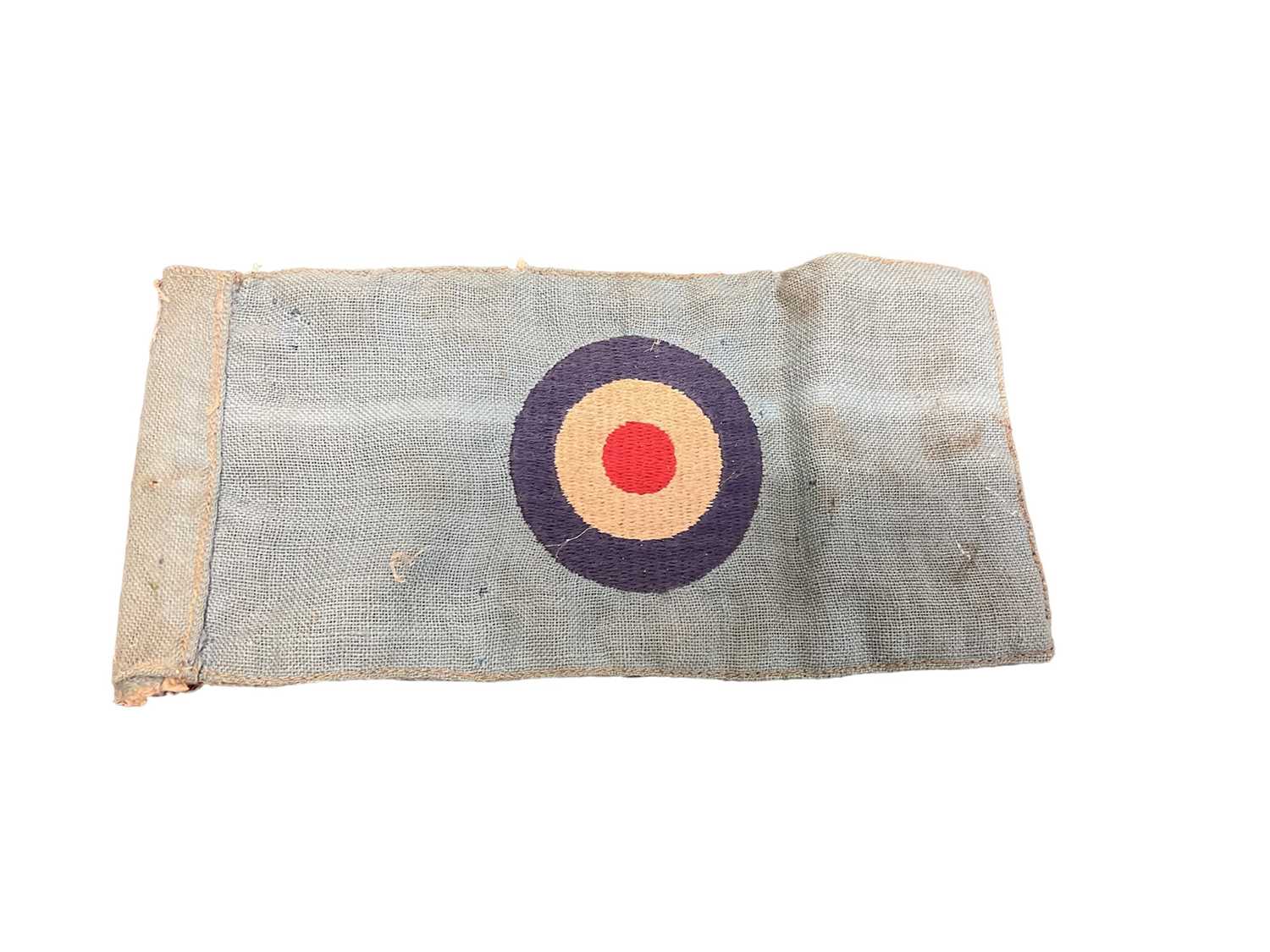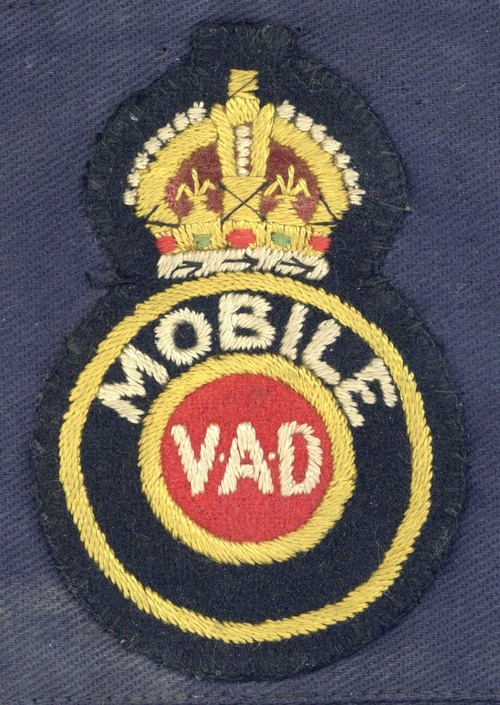A scarce Second War 1943 ‘Northwest African Coastal Air Force’ D.F.C. group of eight awarded to Beaufighter pilot Wing Commander H. Woolstencroft, 144 Squadron, Royal Air Force, for his gallantry in leading a formation of 8 Beaufighters against an Italian shipping convoy, 23 July 1943, which lead to the destruction of ‘One merchant vessel blown up and the other left sinking. The stern of one destroyer blown off and the ship left burning fiercely. One escort ship set on fire and an Italian flying boat shot down into the sea’ Distinguished Flying Cross, G.VI.R., reverse officially dated ‘1943’, with Royal Mint case of issue; 1939-45 Star; Atlantic Star; Italy Star; Defence and War Medals 1939-45; General Service 1962-2007, 2 clasps, Radfan, South Arabia (Wg. Cdr. H. Woolsten-Croft [sic] R.A.F.) 2nd clasp loose on riband, as issued, mounted as originally worn and housed in a custom made case by Mappin & Webb Ltd, ribands somewhat mildewed, generally nearly very fine or better (8) £2,000-£2,400 Footnote D.F.C. London Gazette 24 September 1943, the original recommendation states: ‘On 24th [sic] July, Flying Officer Woolstencroft was leader of a strike of eight Beaufighters of 144 Squadron. A convoy of two merchant vessels with a large escort was sighted. On instructions from Flying Officer Woolstencroft the formation immediately attacked. The attack was so skilfully executed and pressed home with such determination that one merchant vessel was sunk and one left sinking. One destroyer was on fire as was one escort vessel, whilst in the middle of the engagement a flying boat was shot down. The other escort vessel blew up. Flying Officer Woolstencroft has been in the Squadron twelve months and has proved himself to be a skilful and determined torpedo pilot and leader.’ Harry Woolstencroft was born in Burnley, Lancashire in December 1917, and was educated at Burnley Grammar School. He enlisted in the Royal Air Force as Aircraftman 2nd Class in August 1936, and advanced to Leading Aircraftman (remustered Armourer) in June 1937. He advanced to Corporal the following year, and remustered as pilot under training. After carrying out initial training, including at No. 6 F.T.S., Little Rissington, Woolstencroft qualified for his ‘Wings’ in November 1939. Having advanced to Sergeant, he was posted to No. 16 O.T.U. in May 1940, and served as Temporary Flight Sergeant at No. 3 School of General Reconnaissance, Squires Gate, from January 1941. Woolstencroft was commissioned Pilot Officer (on probation) in May 1942, and posted to No. 1 T.T.U., Abbotsinch, in July of the same year. He was posted to 144 Squadron (Hampdens and Beaufighters) at Leuchars, in September 1942. The Squadron had been newly assigned to Coastal Command for torpedo-bombing training. Woolstencroft flew on anti-submarine and shipping strikes with the Squadron in and around Norway from December 1942. The Squadron converted to Beaufighters in January 1943, and continued with the same operations in and around Iceland. Woolstencroft’s Beaufighter was attacked and chased by a M.E.109 whilst on a Rover, 27 April 1943, and again 1 May 1943, ‘Strike - Lister to Stavanger. Shot Up By 109’s. 8 Attacks’ (Log Book refers). Having fully converted to Beaufighters, 144 Squadron flew to North Africa in June 1943. Woolstencroft moved with the Squadron to Protville II, North Tunis, and engaged in attacks on enemy shipping in the Mediterranean as part of the Northwest African Coastal Air Force. The Squadron usually sent out an open formation of eight aircraft in line abreast, with four carrying torpedoes and two more at each end providing anti-flak and fighter protection. The formation extended for about a mile over the sea, and they often had to fly up to 1,250 miles on Armed Rover operations. Woolstencroft attacked a Schooner, 23 June 1943, and flew in several other strikes before leading a formation of eight Beaufighters, 23 July 1943, ‘A/Shipping Strike - Base - Plain Isle - Guardla Point - Mo
A scarce Second War 1943 ‘Northwest African Coastal Air Force’ D.F.C. group of eight awarded to Beaufighter pilot Wing Commander H. Woolstencroft, 144 Squadron, Royal Air Force, for his gallantry in leading a formation of 8 Beaufighters against an Italian shipping convoy, 23 July 1943, which lead to the destruction of ‘One merchant vessel blown up and the other left sinking. The stern of one destroyer blown off and the ship left burning fiercely. One escort ship set on fire and an Italian flying boat shot down into the sea’ Distinguished Flying Cross, G.VI.R., reverse officially dated ‘1943’, with Royal Mint case of issue; 1939-45 Star; Atlantic Star; Italy Star; Defence and War Medals 1939-45; General Service 1962-2007, 2 clasps, Radfan, South Arabia (Wg. Cdr. H. Woolsten-Croft [sic] R.A.F.) 2nd clasp loose on riband, as issued, mounted as originally worn and housed in a custom made case by Mappin & Webb Ltd, ribands somewhat mildewed, generally nearly very fine or better (8) £2,000-£2,400 Footnote D.F.C. London Gazette 24 September 1943, the original recommendation states: ‘On 24th [sic] July, Flying Officer Woolstencroft was leader of a strike of eight Beaufighters of 144 Squadron. A convoy of two merchant vessels with a large escort was sighted. On instructions from Flying Officer Woolstencroft the formation immediately attacked. The attack was so skilfully executed and pressed home with such determination that one merchant vessel was sunk and one left sinking. One destroyer was on fire as was one escort vessel, whilst in the middle of the engagement a flying boat was shot down. The other escort vessel blew up. Flying Officer Woolstencroft has been in the Squadron twelve months and has proved himself to be a skilful and determined torpedo pilot and leader.’ Harry Woolstencroft was born in Burnley, Lancashire in December 1917, and was educated at Burnley Grammar School. He enlisted in the Royal Air Force as Aircraftman 2nd Class in August 1936, and advanced to Leading Aircraftman (remustered Armourer) in June 1937. He advanced to Corporal the following year, and remustered as pilot under training. After carrying out initial training, including at No. 6 F.T.S., Little Rissington, Woolstencroft qualified for his ‘Wings’ in November 1939. Having advanced to Sergeant, he was posted to No. 16 O.T.U. in May 1940, and served as Temporary Flight Sergeant at No. 3 School of General Reconnaissance, Squires Gate, from January 1941. Woolstencroft was commissioned Pilot Officer (on probation) in May 1942, and posted to No. 1 T.T.U., Abbotsinch, in July of the same year. He was posted to 144 Squadron (Hampdens and Beaufighters) at Leuchars, in September 1942. The Squadron had been newly assigned to Coastal Command for torpedo-bombing training. Woolstencroft flew on anti-submarine and shipping strikes with the Squadron in and around Norway from December 1942. The Squadron converted to Beaufighters in January 1943, and continued with the same operations in and around Iceland. Woolstencroft’s Beaufighter was attacked and chased by a M.E.109 whilst on a Rover, 27 April 1943, and again 1 May 1943, ‘Strike - Lister to Stavanger. Shot Up By 109’s. 8 Attacks’ (Log Book refers). Having fully converted to Beaufighters, 144 Squadron flew to North Africa in June 1943. Woolstencroft moved with the Squadron to Protville II, North Tunis, and engaged in attacks on enemy shipping in the Mediterranean as part of the Northwest African Coastal Air Force. The Squadron usually sent out an open formation of eight aircraft in line abreast, with four carrying torpedoes and two more at each end providing anti-flak and fighter protection. The formation extended for about a mile over the sea, and they often had to fly up to 1,250 miles on Armed Rover operations. Woolstencroft attacked a Schooner, 23 June 1943, and flew in several other strikes before leading a formation of eight Beaufighters, 23 July 1943, ‘A/Shipping Strike - Base - Plain Isle - Guardla Point - Mo









/118548/Internet%20Image%201.jpg)
/129318/Internet%20Image%201.jpg)

/121745/Internet%20Image%201.jpg)
/125293/Internet%20Image%201.jpg)

Try LotSearch and its premium features for 7 days - without any costs!
Be notified automatically about new items in upcoming auctions.
Create an alert